Apologies for the gap between posts, this is due to a combination of other work, and new data arriving erratically.
In view of the recent interest in the unplanned return of a Soviet Venera probe to Earth, I decided a collection of bits and pieces about the program was a good idea.
This post collects items from the Soviet program to explore Venus, (Venera is Russian for Venus), the only planetary program of the early years where the Soviet Union was much more successful than America.
Venus Conditions, and exploration
I assume my audience here is generally knowledgeable, but if you are not familiar with the insane pressures and temperatures, you could do a lot worse than read these articles by Don Mitchell:
http://mentallandscape.com/V_Venus.htm
CGI, Landed Venera Probe:
Here’s a short animation I made of a Venera probe on the surface of Venus:
Soviet Illustrations:
And another:
On the way down, Venera 8 collected lots of information, here’s a translation of what the researchers reported:
Data from scientific instruments showed that the temperature and pressure of the atmosphere at the surface at the Venera-8 landing site were, respectively, 470 ± 8 ° C and 90 ± 1.5 atmospheres, and the surface illumination at a solar angle of 5.5 ° was 350 ±150 lux. During descent at altitudes of about 46 and 33 km, a volumetric ammonia content of 0.01–0.1% was recorded in the atmosphere; at altitudes of 50 and 0–11 km, wind speeds were, respectively, 50–60 and 0–2 m/s. It was concluded that the surface layer of the planet in the area where the apparatus landed was quite loose with a soil density of 1.4 g/cm3, and the soil itself resembled terrestrial granite rocks.
Here’s a view of the Venera 4 version of the interplanetary station that delivered the probes, cleaned and with translated captions, by me:
Venera 4 descent module, with captions:
A photo of Venera 8 taken shortly before it was launched:
And a Soviet illustration detailing the plan for Venera 8 to descend to the surface of Venus. By this time they had a pretty good idea of what they were dealling with.
Meanwhile, back at the CGI, here’s a, (low accuracy), model and animation of a Venera spacecraft:
Venera 1, data from the RGANTD Archive:
Here are four diagrams of Venera 1, from the Russian state archive. Cleaned and enlarged, but not (yet) translated.
And here are the notes from RGANTD on the above Venera 1 diagrams, computer translated:
On 12 February 1961, the world's first automatic interplanetary station was launched towards Venus.
The Russian State Archive of Scientific and Technical Documentation in the fonds of Arvid Vladimirovich Pallo, an associate of S.P. Korolev, holds drawings of the automatic interplanetary station (AIS) "Venera-1". These documents are important for studying the history of Russian cosmonautics. Today we present some of them.
In the picture from v. 63 - a general view of the AMS "Venera-1" in two projections with the indication of onboard systems, devices and units. The station was equipped with a corrective propulsion system (CPS), solar panels, antennas, orientation sensors, and scientific instruments. It included a magnetometer, two ion traps for measuring solar wind parameters, a micrometeorite detector, a Geiger counter and a detector for measuring cosmic radiation.
The Venera-1 mission had a simplified design, so it did not have a parachute descent vehicle or photo-television equipment. Nevertheless, the developers of the interplanetary station installed on it pennants with the image of the coat of arms of the USSR in the hope that they will still reach the surface of the Venusian ocean. In those years, many scientists believed that there must be a giant ocean on Venus. In fact, as it turned out later, the planet is dehydrated and red-hot to a temperature of almost 500 degrees, and the pressure on the surface of Venus is over 90 atmospheres.
The drawing from D. 67 shows the spiral cone antenna in the folded and working position, and the drawing from E. 68 is a parabolic mirror antenna in which a special radio fabric was used. The figure from D. 83 shows a breakaway plug board with connectors and pyro-lock.
AMS Venera-1, weighing 643.5 kg, was put on a flight path to Venus by the four-stage launch vehicle 8K78. On its way to the target, the station conducted several important space studies. It confirmed the presence of solar wind plasma and obtained data on its parameters in the vicinity of the Earth and at a distance of about two million kilometres from it. Unfortunately, the last radio communication session with Venus-1 took place on 19 February 1961. The spacecraft was lost: the station did not respond to the call at the moment when a session was scheduled. In the last communication sessions with the station, a failure was detected in one of the Venus-1 systems.
According to ballistic calculations, on 19-20 May 1961 the station passed at a distance of about 100 thousand km from Venus and entered the orbit of the Sun's satellite.
S.H. Shamsutdinov
Venera 13, (I think), being mounted in the fairings:
This edition’s cool link:
I mentioned in near the start, but Don P. Mitchell’s page on Venus exploration is exceptionally good, and well worth a visit.
This editions cool image:
A whole load of Soviet space hardware was loaned to the London Science Museum for their “Cosmonauts” exhibition. Here’s a big photo of the Venera lander I took, stitched together from 3 images.
And here’s a closer view of the main module
This edition’s special 7 day download:
A PDF format Soviet Union document from 1972, with illustrations, reporting on the Venera 8 mission to Venus. The download link will only work for 7 days from the publication of this post.
That’s all folks!







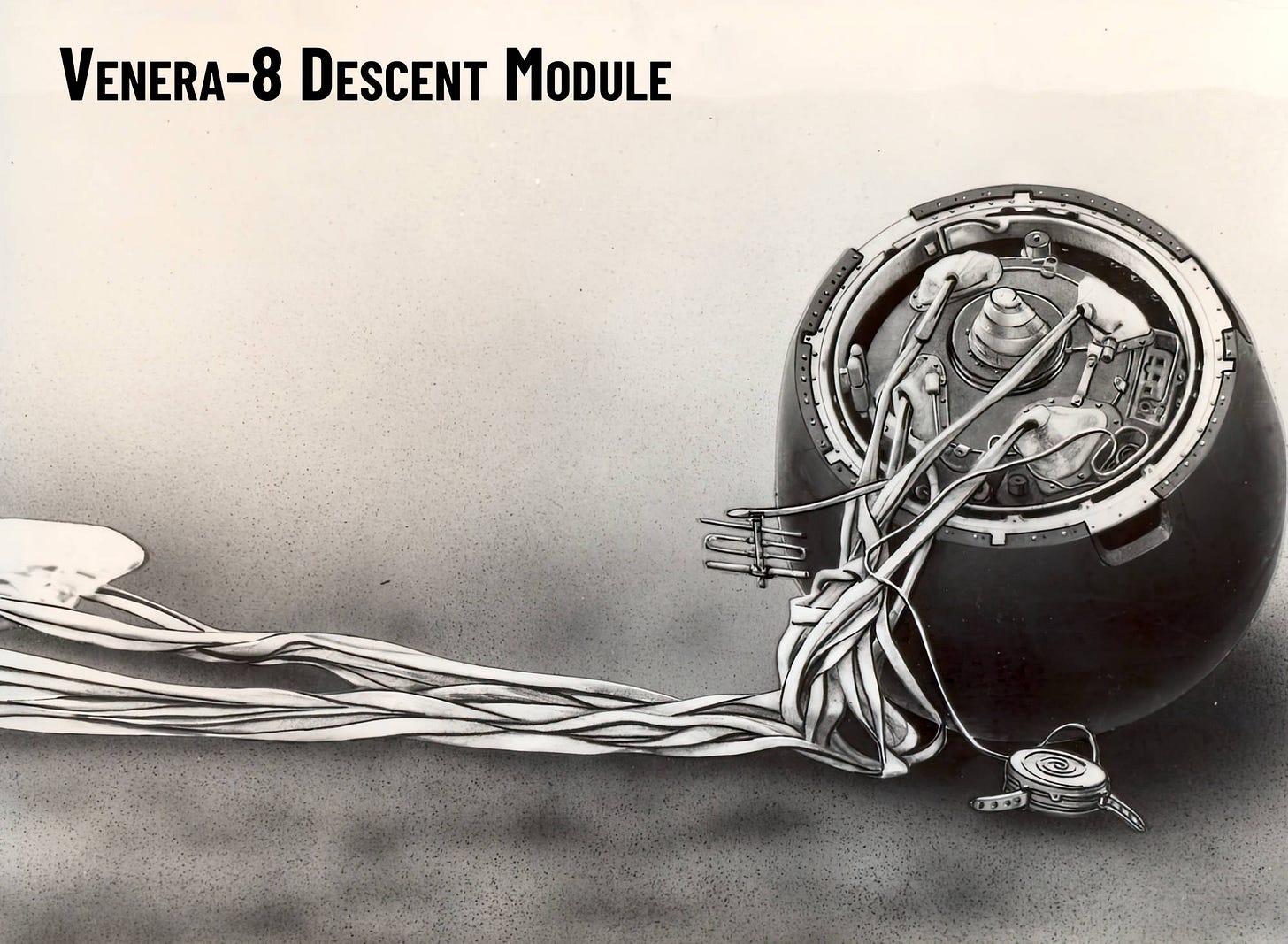
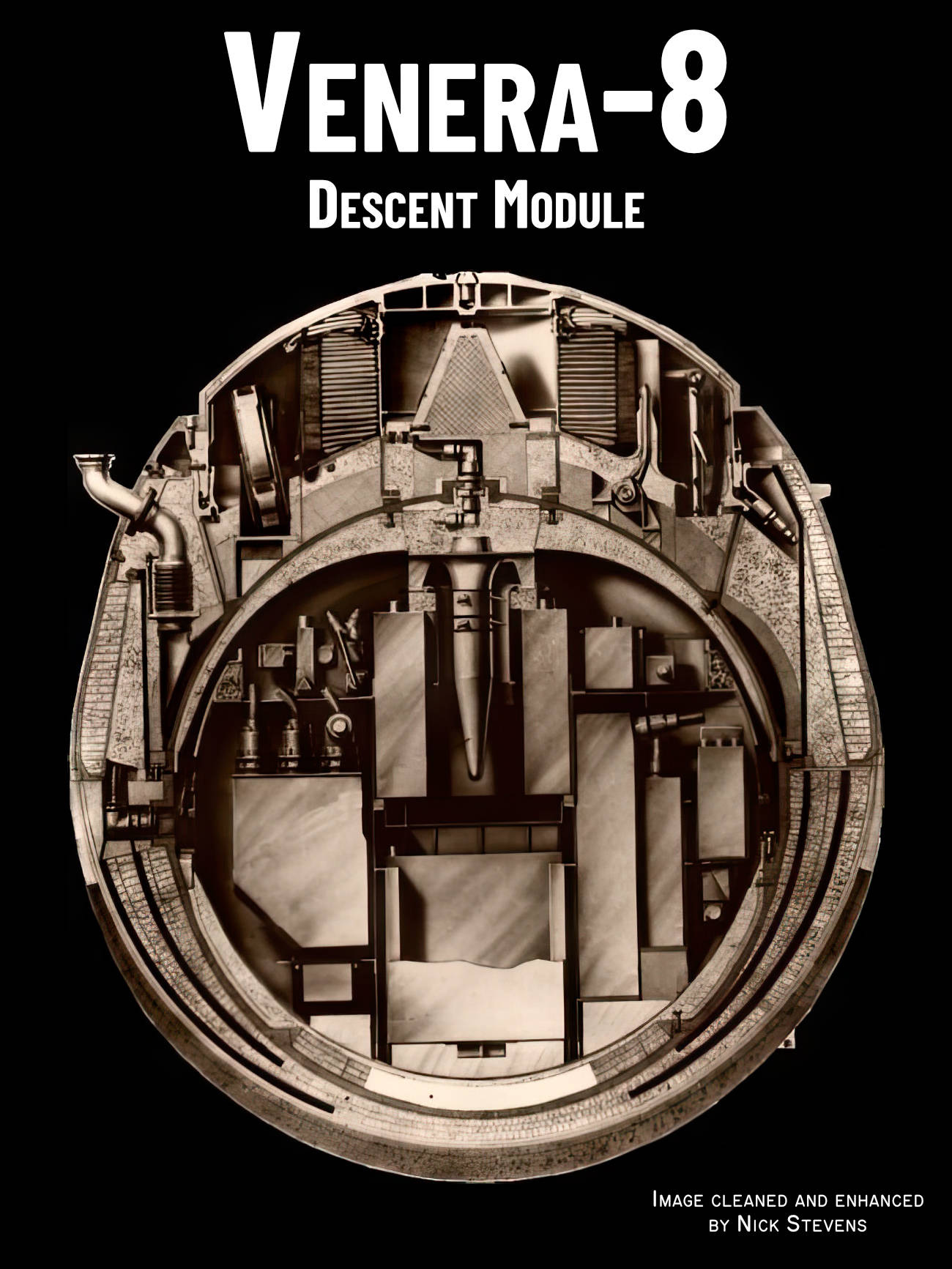



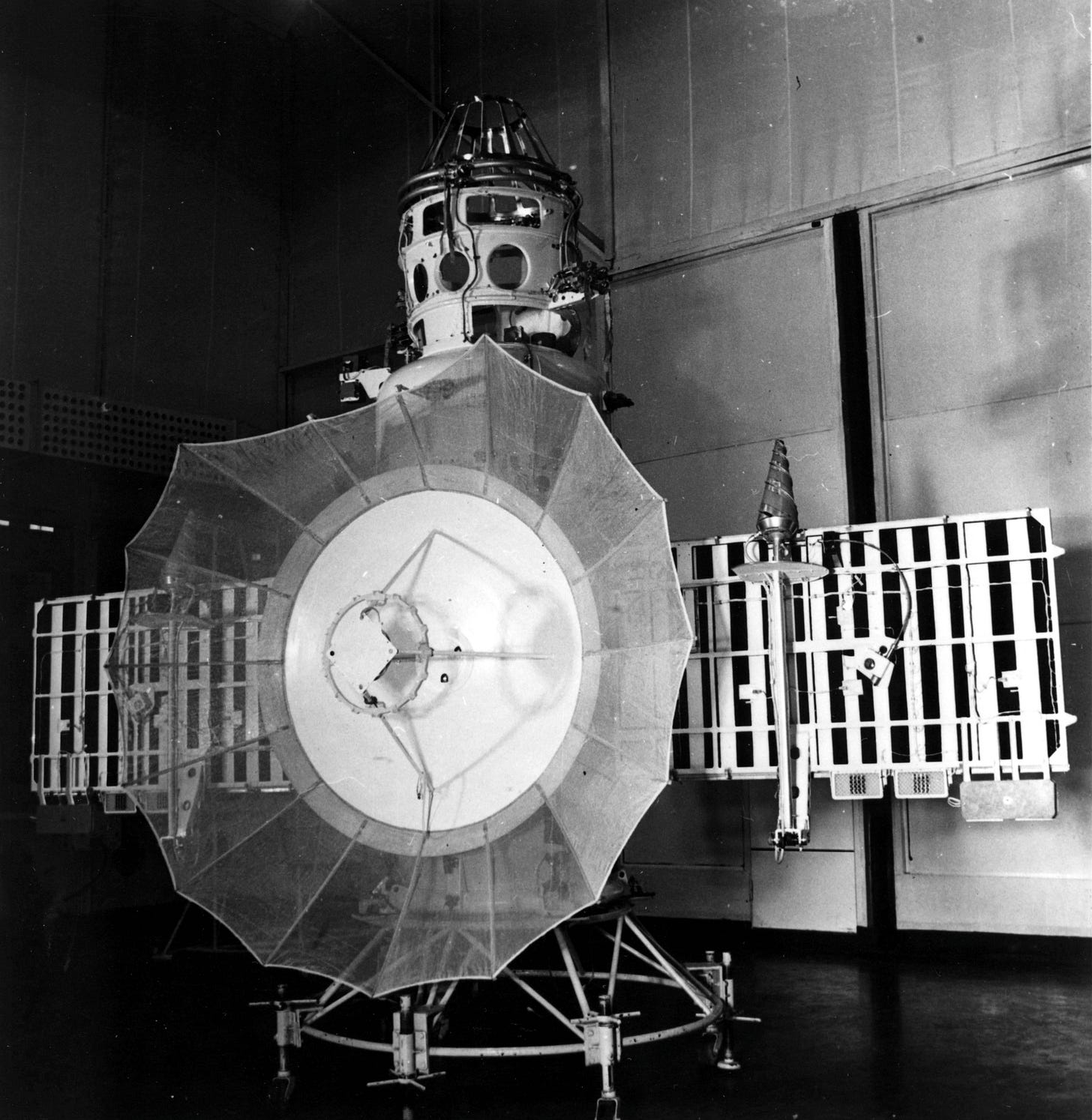
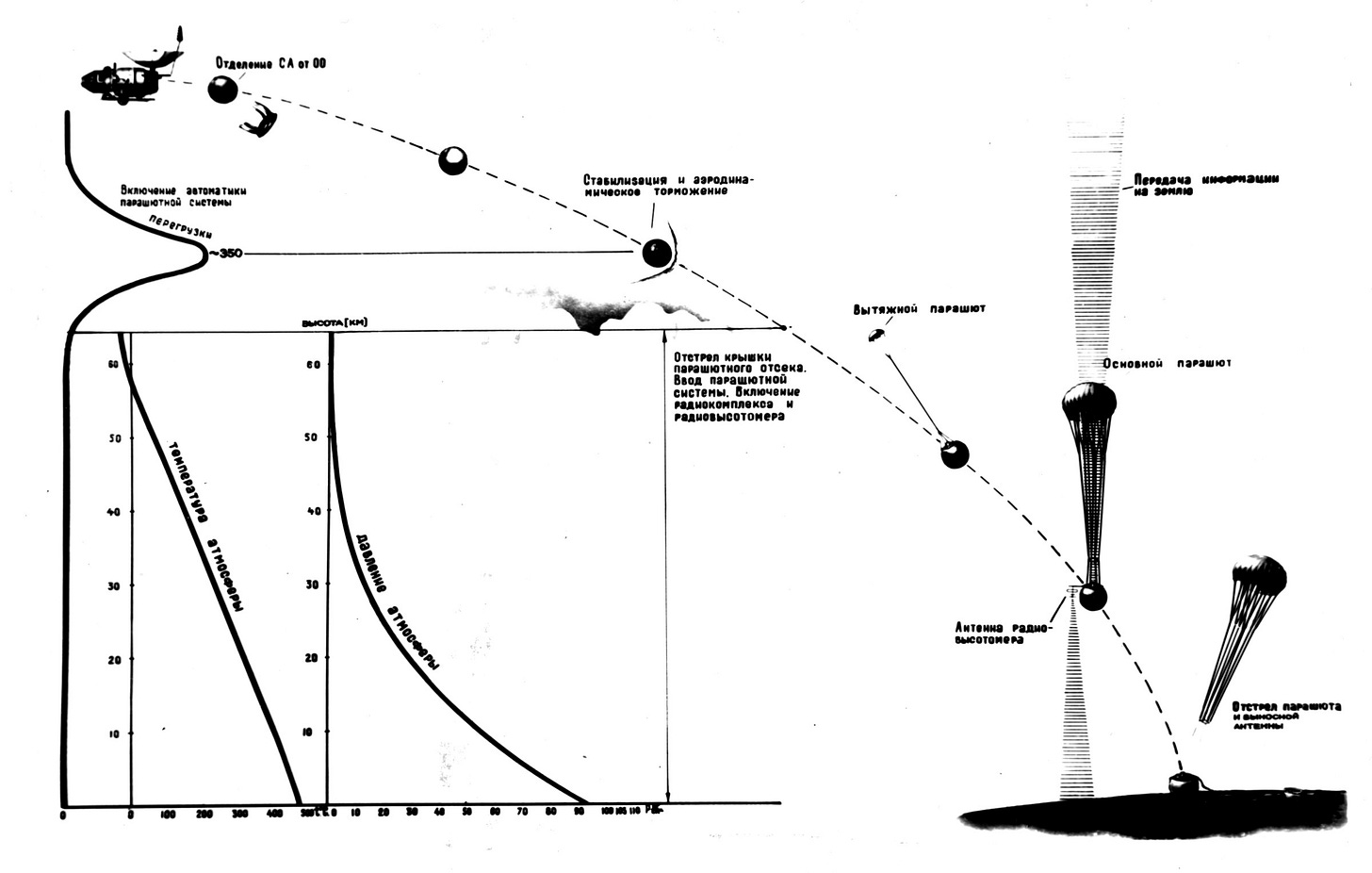
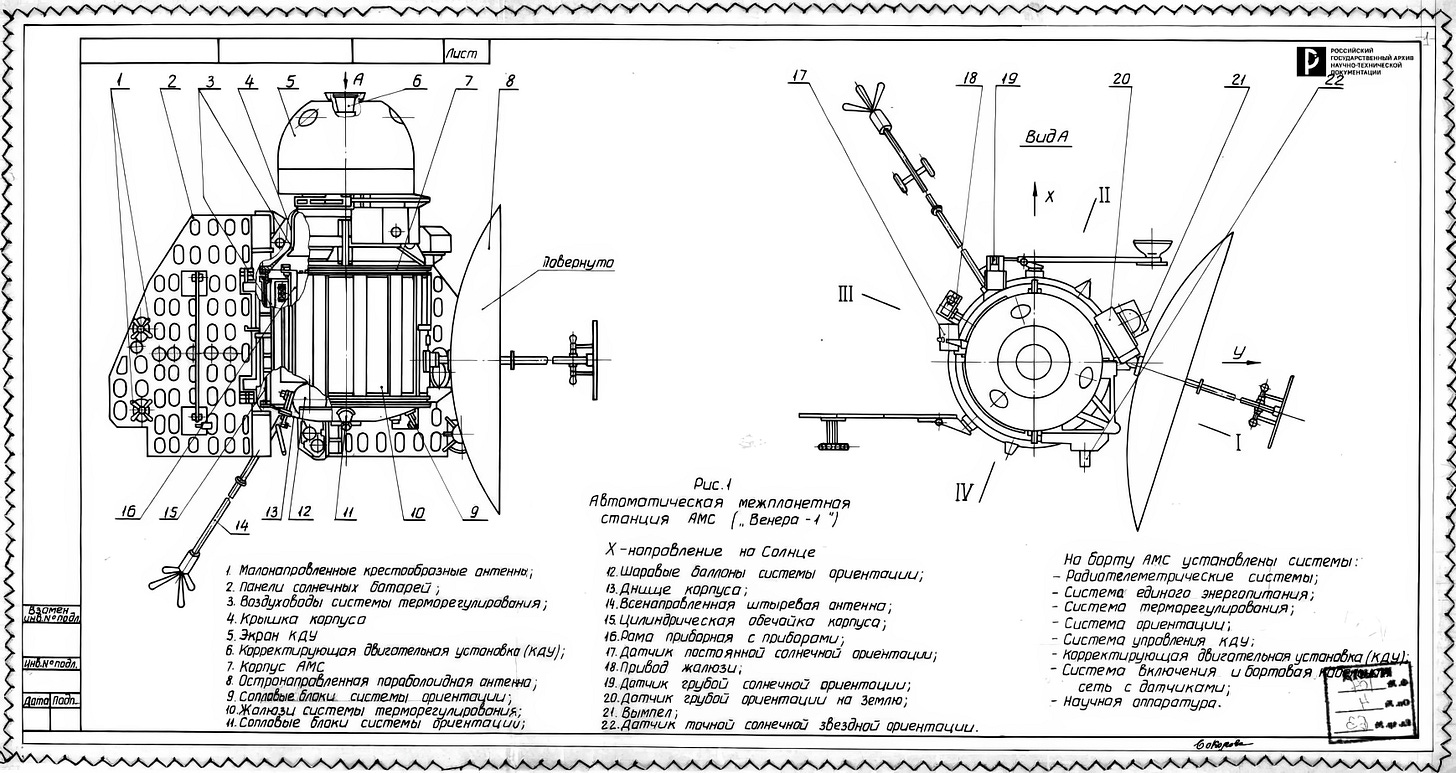


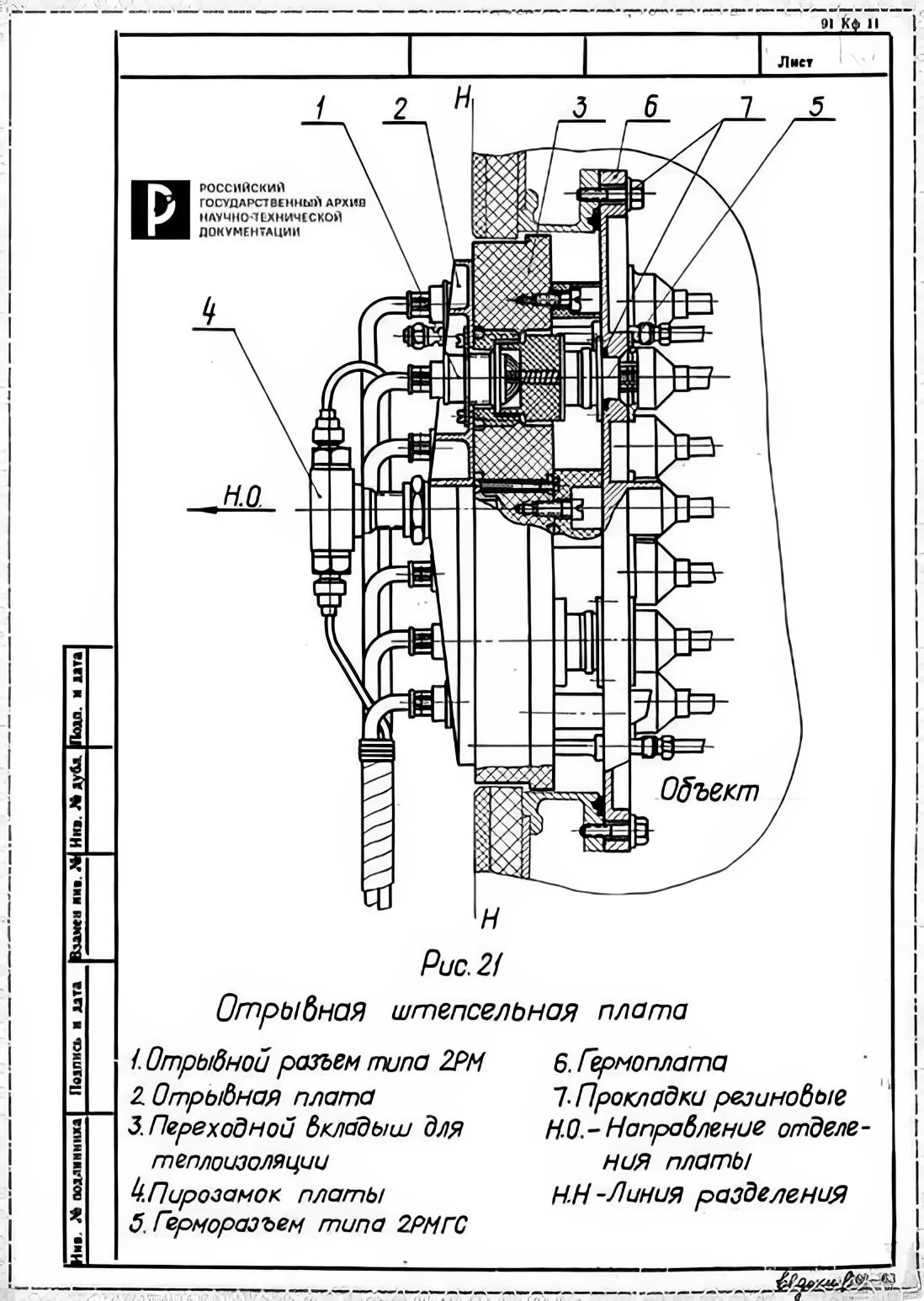
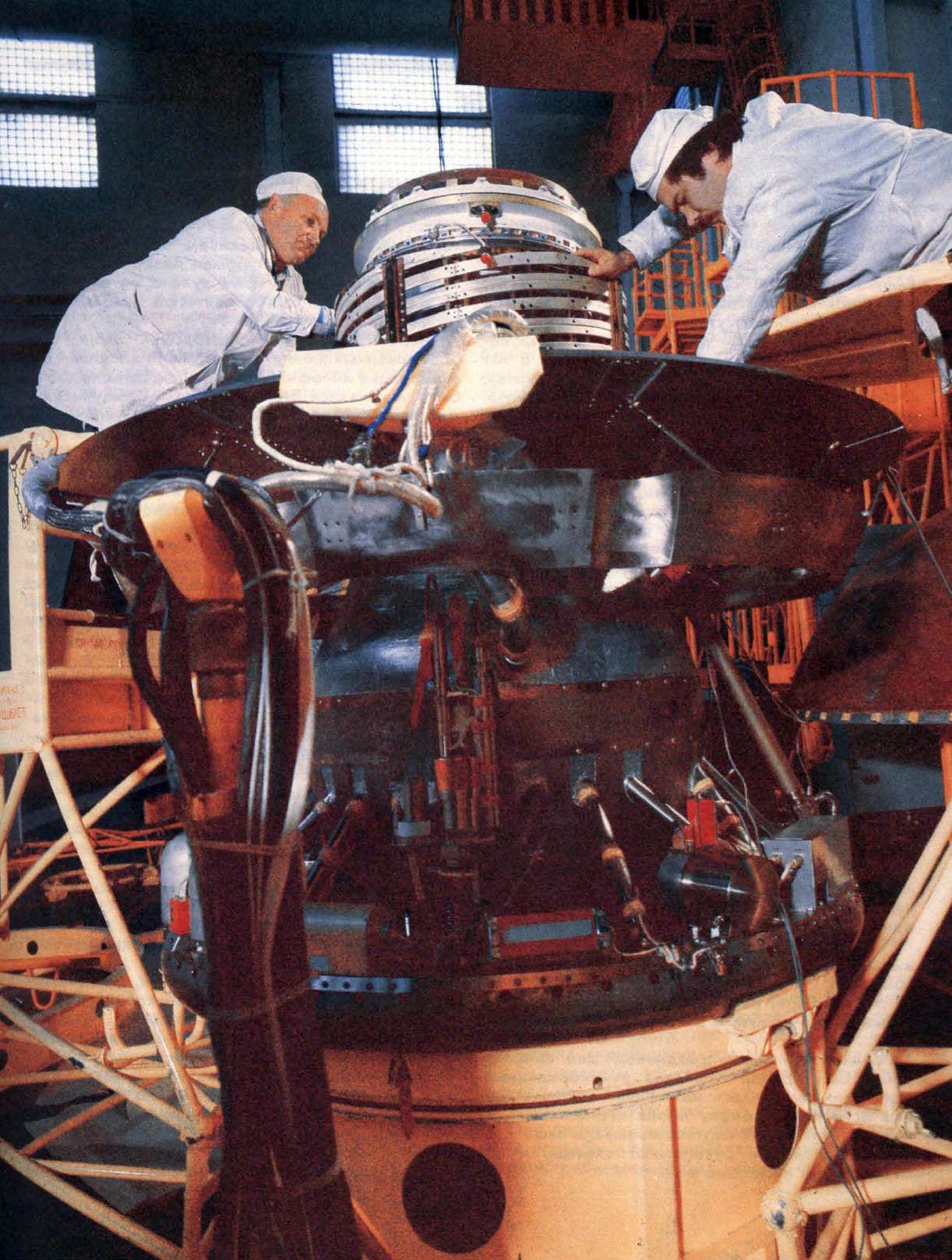

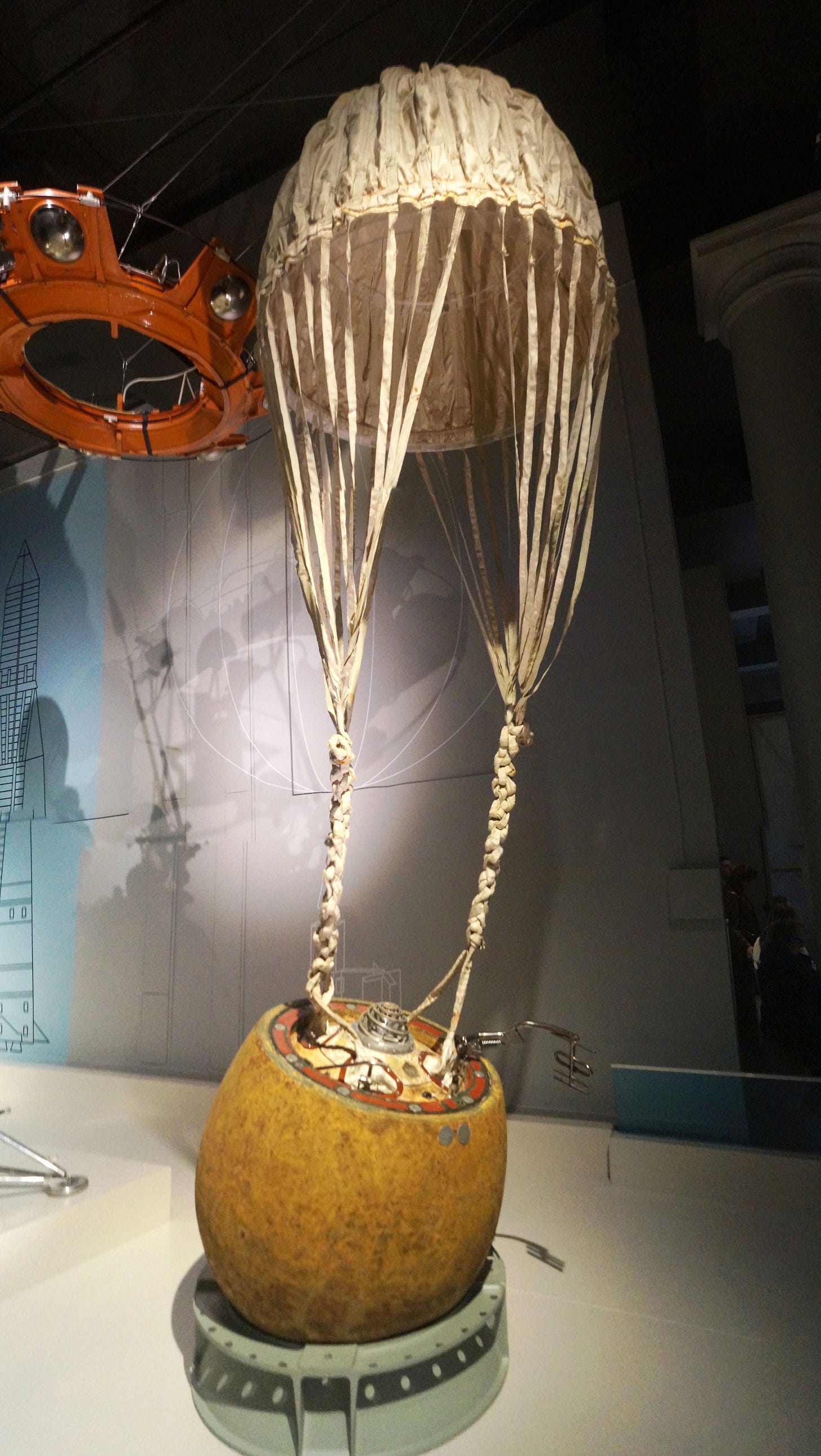
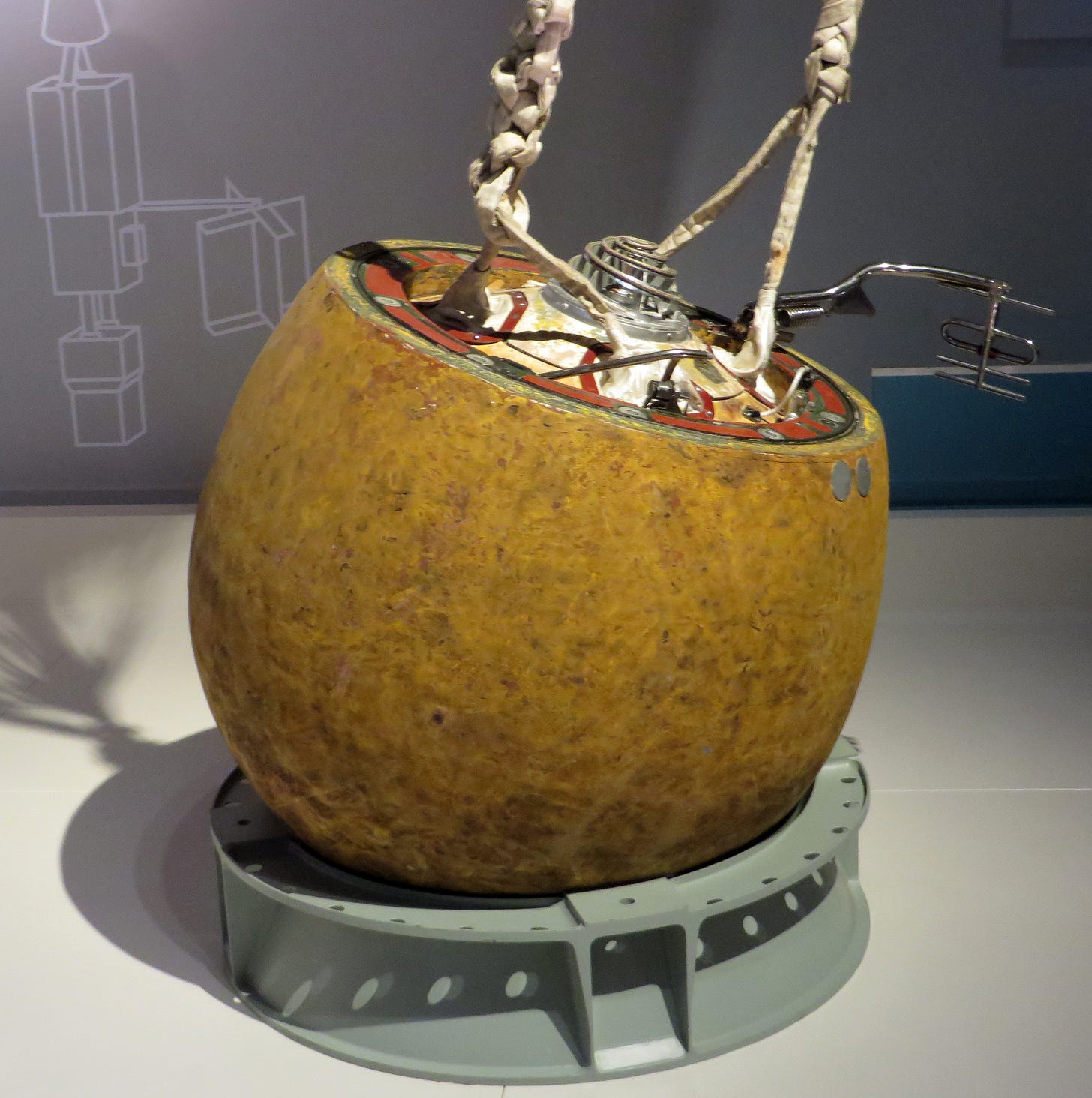

Really fascinating. The Venera missions are some of my all-time favorites, and I love Don P. Mitchell’s site, it's always a pleasure to revisit such a treasure trove. Don’s section on Soviet Venus imagery is a fantastic resource, It would be amazing to see your take on the subject!
Nick - how did you know? The Venera/Vega probes are my favorite unmanned Soviet space subject! I have a (real) model of one, and an as-yet-unprinted 3D model of another. The real one is being done from photos of the exact same mockup you posted in this article.